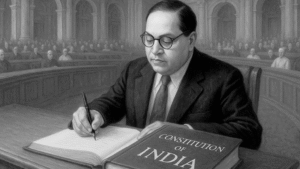The Growing Influence of Regional Parties in Indian Politics | Role & Impact
Introduction
India, the world’s largest democracy, has a dynamic and diverse political landscape. While national parties like the Bharatiya Janata Party (BJP) and the Indian National Congress (INC) have played a significant role in shaping the country, regional parties have emerged as powerful political forces, influencing both state and national governance. These parties, which primarily operate in specific states, represent local aspirations, cultural identities, and regional demands, making them crucial in India’s federal structure.
In this blog, we will explore the role of regional parties in Indian politics, their impact on governance, and their increasing significance in the electoral process.
The Emergence of Regional Parties in India
Regional parties began to gain prominence after India adopted a multi-party system post-independence. While the Congress Party dominated Indian politics for the first few decades, the 1967 elections marked the rise of regional parties, reflecting growing dissatisfaction with central leadership and increasing regional consciousness.
Some of the earliest and most influential regional parties include:
- Dravida Munnetra Kazhagam (DMK) (Founded in 1949, Tamil Nadu) – Advocated Tamil pride and social justice.
- Shiv Sena (Founded in 1966, Maharashtra) – Promoted the rights of Marathi people.
- Telugu Desam Party (TDP) (Founded in 1982, Andhra Pradesh) – Challenged Congress’s dominance in South India.
Over the decades, many more regional parties have emerged, such as the Aam Aadmi Party (AAP), Trinamool Congress (TMC), Samajwadi Party (SP), and Bahujan Samaj Party (BSP), each catering to unique regional interests and communities.
Why Are Regional Parties Important in Indian Politics?
1. Representation of Local Aspirations
One of the primary reasons for the rise of regional parties is their ability to address local issues more effectively than national parties. Whether it is the demand for a separate state, linguistic identity, or economic concerns, regional parties resonate with the local population’s sentiments.
For example:
- Biju Janata Dal (BJD) in Odisha focuses on state development and Odia culture.
- Trinamool Congress (TMC) in West Bengal advocates Bengali identity and regional governance.
2. Strengthening India’s Federalism
Regional parties play a crucial role in maintaining India’s federal structure by ensuring that state governments have a voice in national politics. They often challenge centralization of power, advocating for more autonomy and financial resources for states.
3. Impact on Coalition Governments
India has witnessed several coalition governments since 1989, where regional parties have played kingmakers. Some key instances include:
- 1996-1998 United Front Government, supported by multiple regional parties.
- 1999-2004 National Democratic Alliance (NDA) Government, where parties like TDP and Shiv Sena played significant roles.
- 2004-2014 United Progressive Alliance (UPA) Government, with crucial support from DMK and NCP.
4. Policy and Governance Influence
Regional parties influence governance at both state and national levels. Their demands often lead to policy changes, such as:
- Special economic packages for states.
- Reservations and welfare schemes for specific communities.
- Focus on regional development projects.
For example, DMK and AIADMK have been instrumental in shaping Tamil Nadu’s education and social welfare policies.
Challenges Faced by Regional Parties
1. Dynastic Politics
Many regional parties are controlled by a single family, leading to concerns about nepotism and lack of internal democracy. Examples include:
- Samajwadi Party (SP) – Controlled by the Yadav family.
- Rashtriya Janata Dal (RJD) – Dominated by Lalu Prasad Yadav’s family.
2. Limited National Presence
Despite their influence in states, most regional parties lack a national footprint, restricting their ability to push for larger national policies.
3. Political Instability and Fragmentation
The presence of multiple regional parties can lead to political instability, especially when coalition governments fall apart due to ideological or power struggles.
4. Allegations of Corruption and Misgovernance
Some regional parties face accusations of corruption, vote-bank politics, and misgovernance, which impacts their credibility.
Future of Regional Parties in Indian Politics
With regional identities strengthening and local governance gaining more importance, regional parties are likely to remain a crucial pillar in Indian democracy. Some trends to watch include:
- Rise of regional alliances – Many regional parties are forming alliances to challenge national parties, as seen in Maharashtra and Bihar.
- Greater influence in policy-making – Regional parties are pushing for more say in national economic and social policies.
- Technology-driven campaigns – Parties are increasingly using social media, digital platforms, and data analytics to connect with voters.
Conclusion
Regional parties are no longer just “small players” in Indian politics—they are powerful entities shaping governance, elections, and public policy. Their role in strengthening democracy, advocating local issues, and influencing coalition politics cannot be ignored.
As India moves forward, the relationship between national and regional parties will continue to evolve, making politics more competitive and dynamic. The success of these parties will depend on their ability to balance regional aspirations with national development, ensuring both stability and progress.
External Links:
- Election Commission of India – Official site for elections and political parties.
- PRS Legislative Research – In-depth policy analysis and reports on Indian politics.
Share this content:











Post Comment